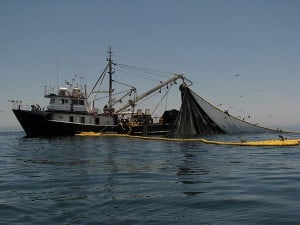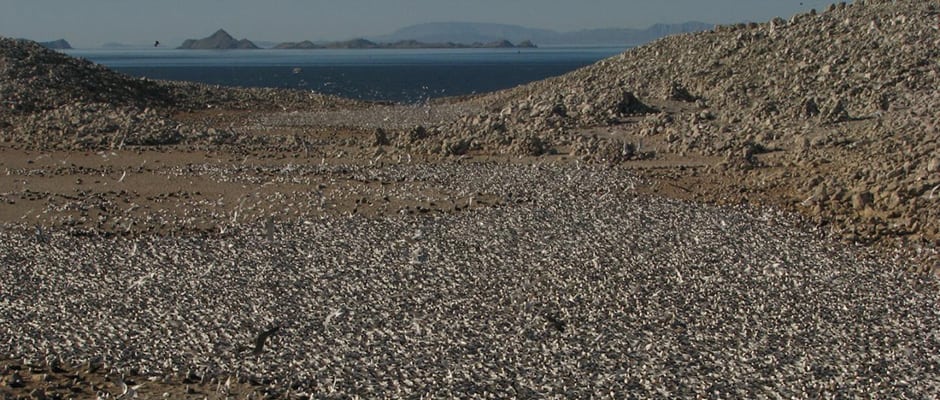Share this article
Overfishing, Climate Change Push Mexican Seabirds North
Climate change and overfishing is pushing a colony of seabirds from their native Mexican nesting grounds into California.
“The problem for the elegant terns is not only the temperature anomalies but also the overfishing of sardines” said Enriqueta Velarde, an ecologist at the University of Veracruz in Mexico and the lead author of a study recently published in Science Advances.

A sardine fishing boat in the Gulf of California´s Midriff Island Region hauls the purse-seine net after a fishing operation in 2013, when their catch of Pacific sardine had nearly collapsed due to overfishing.
Image Credit: E. Velarde
Velarde has been studying elegant terns (Thalasseus elegans) since 1979 when she first came to the island of Isla Rasa in the Gulf of California, which usually hosts about 95 percent of the population of the migratory birds. Back then, there were 15,000 nests but the Mexican government had given that island and others in the Gulf protected status a few years earlier. Populations increased, further helped by the 1995 eradication of a rat population that had been introduced in the late 19th century. “The rats were feeding on the seabirds’ eggs and little chicks,” Velarde said.
By around 2008 the island hosted around 150,000 — about 10 times the number of birds around when Velarde first arrived.
But the terns failed to make a single nest in five out of the last 15 years. They arrived in the end of March upon their return from Chile, stayed for a couple of weeks, then left.
Meanwhile, researchers in California noticed elegant tern numbers were increasing in the Los Angeles harbor, the Bolsa Chica Ecological Reserve in Huntington Beach and particularly in the San Diego Bay.
“This species’ breeding is mostly restricted to this island at present. But in the last 15 years it has been going to California to nest,” Velarde said. “If we collaborate [internationally] we can get interesting results that can help everyone,” Velarde said.
Not all of the birds were able to find new nesting grounds in California, though. Velarde said many of them may have returned to Chile after spending some time looking for suitable breeding or nesting grounds.
Velarde and other researchers set out to find the reasons behind these habitat changes and discovered that the exodus years (2003, 2009, 2010, 2014 and 2015) correlate well with warm water periods in the Gulf of California.
“Elegant terns are a very good indicator species for the area,” she said. “This century there’s been more frequent sea surface temperature anomalies in the Gulf of California.”
Yet El Nino and global warming were only part of the story. The sardine fishing fleet off the coast of the state of Sonora has been picking up over the last decade or so. The Mexican sardine fleet recorded a record catch of half a million tons in 2009 — one of the years that the terns didn’t nest on Isla Rasa — and the fishery has collapsed since then.
Elegant terns feed on sardines and other small pelagic fish, and Velarde said that this overfishing could be further exacerbating the bad conditions imposed by changing climate. Other birds such as brown pelicans (Pelecanus occidentalis), Heermann’s gulls (Larus heermanni), brown boobies (Sula leucogaster) and blue-footed boobies (Sula nebouxii) have also faced similar population declines in the Gulf as well as some marine mammals like sea lions and whales.
“We’re experiencing an ecosystem collapse,” Velarde said. “Those small pelagic species feed a huge amount of animals.”
While population fluctuations are normal in any populations, she said that overfishing doesn’t help an ecosystem already suffering from climate change related problems.
“The Gulf of California has been having these wider fluctuations and more extreme changes in temperatures,” she said. As a result, “we need to manage the sea resources in a very careful manner.”
Header Image:
A healthy colony of terns nests on Isla Rasa in the Midriff Island Region of the Gulf of California in 2011.
Image Credit: E. Velarde.








